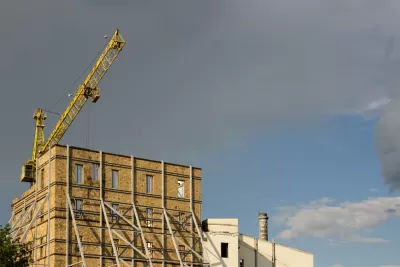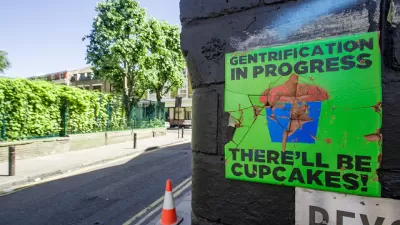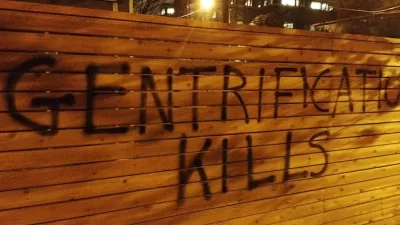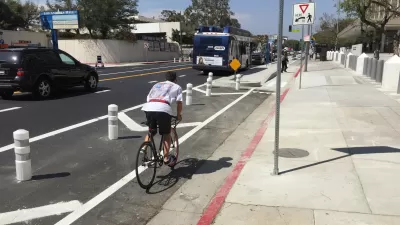Gentrification is apparently quite rare—so why do urban affairs commentators devote so much time arguing about it?

A few months ago, the National Community Reinvestment Coalition (NCRC) issued a widely publicized study on gentrification. The study found that gentrification was "rare" outside the biggest U.S. cities, and that "seven cities accounted for nearly half of the gentrification nationally: New York City, Los Angeles, Washington, D.C., Philadelphia, Baltimore, San Diego and Chicago." In 76 percent of cities, not one Census tract gentrified; in 20 percent more, five or fewer tracts gentrified.
But even in those cities, gentrification occurred in a tiny minority of neighborhoods. For example, in Washington, D.C. (which the NCRC report described as the "most gentrified city") only 62 of the city's 1346 Census tracts gentrified—only 4.6 percent. In New York City, only 144 out of 4515 tracts gentrified—about 3.2 percent. Displacement (which the study defined as a decline in Black and/or Hispanic population) was even more rare. Nationally, displacement occurred in only 22 percent of all gentrifying tracts. In Washington, D.C. (the city with the most displacement) it occurred in 33 tracts, or 2.4 percent of all tracts. In New York, it occurred in only 26 tracts, or less than 1 percent. In San Francisco and Oakland, displacement occurred in only 13 out of 975 tracts. In Atlanta, displacement occurred in only 7 out of 946 Census tracts.
So even according to a progressive community development organization, gentrification and displacement are only slightly more common than the Easter Bunny. So why do scholars and planners write about it so much? I am not sure, but have I three possible explanations.
First, perhaps people who write about gentrification tend to live in gentrifying areas. In my experience, scholars and planners often do not earn enough to live in a city’s traditionally affluent neighborhoods (such as New York’s Upper East Side). Some of these people move to suburbia—but others might be more likely to live in a more affordable neighborhood, which often is a newly gentrifying neighborhood. For example, I live in a part of Midtown that I suspect was affluent before I was born, but many of my friends who are urban planners live in once-poor neighborhoods such as Crown Heights—which is to say, they are arguably gentrifiers themselves.
Second, today city residents tend to be political progressives, and gentrification fits into the Left’s way of looking at the world. Progressives tend to see the rich as oppressors and the poor as oppressed. (By contrast, conservatives tend to see the rich as job creators oppressed by government regulation.) The idea that rich people are kicking poor people out of neighborhoods is one that fits progressives' frame, and so they tend to be much more interested in this scenario than in events that do not fit their frame—for example, stories of bureaucrats oppressing small businesspeople.
Third, sometimes gentrification might be a bad faith argument used by neighborhood activists to keep out housing or stores. Homeowners naturally want to keep the value of their homes high—and the best way to do that is to exclude competitors such as the owners of new housing. But in a politically progressive city, someone who admits that he wants to exclude new housing to keep rents high might seem unprogressive or even racist. So homeowners can clothe their opposition to new housing in progressive language by invoking the threat of gentrification.

Planetizen Federal Action Tracker
A weekly monitor of how Trump’s orders and actions are impacting planners and planning in America.

Maui's Vacation Rental Debate Turns Ugly
Verbal attacks, misinformation campaigns and fistfights plague a high-stakes debate to convert thousands of vacation rentals into long-term housing.

San Francisco Suspends Traffic Calming Amidst Record Deaths
Citing “a challenging fiscal landscape,” the city will cease the program on the heels of 42 traffic deaths, including 24 pedestrians.

Defunct Pittsburgh Power Plant to Become Residential Tower
A decommissioned steam heat plant will be redeveloped into almost 100 affordable housing units.

Trump Prompts Restructuring of Transportation Research Board in “Unprecedented Overreach”
The TRB has eliminated more than half of its committees including those focused on climate, equity, and cities.

Amtrak Rolls Out New Orleans to Alabama “Mardi Gras” Train
The new service will operate morning and evening departures between Mobile and New Orleans.
Urban Design for Planners 1: Software Tools
This six-course series explores essential urban design concepts using open source software and equips planners with the tools they need to participate fully in the urban design process.
Planning for Universal Design
Learn the tools for implementing Universal Design in planning regulations.
Heyer Gruel & Associates PA
JM Goldson LLC
Custer County Colorado
City of Camden Redevelopment Agency
City of Astoria
Transportation Research & Education Center (TREC) at Portland State University
Jefferson Parish Government
Camden Redevelopment Agency
City of Claremont






























